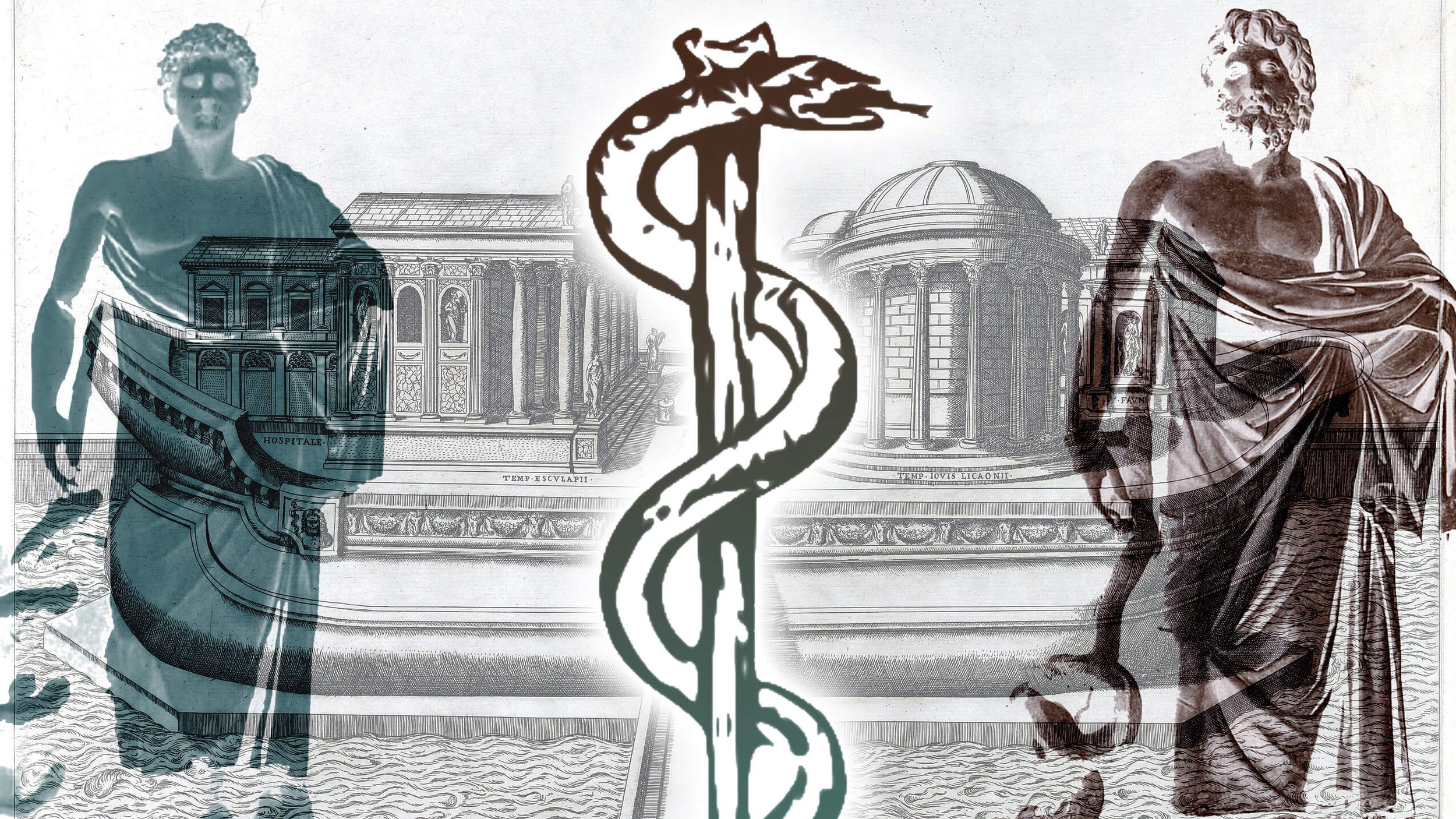The Establishment of the Asclepieion on Tiber Island: A Greek God’s Journey to Heal an Empire
The transfer of the cult of Asclepius to Rome is a significant chapter in the history of ancient religion and medicine. The worship of Asclepius, the god of healing in Greek mythology, was widespread throughout the Greek world and played a central role in many sanctuaries, known as Asclepieia, which functioned as centers of medical practice.
The Crisis of 293 BC and the Roman Appeal to Asclepius
In the late 3rd century BC, Rome faced a severe epidemic that caused widespread fear and distress among the population. The situation was so critical that the Romans, traditionally polytheistic and deeply reverent of their gods, began to seek divine help beyond their borders. Knowing the reputation of the Asclepieion in Epidaurus, Greece, the Romans decided to turn to the god Asclepius for aid in combating the epidemic.
According to historical sources, in 293 BC, a delegation from Rome was sent to Epidaurus to request help from Asclepius. The Greeks of Epidaurus accepted the request and gave the Romans a sacred snake, a symbol of the god and believed to embody his divine power. The delegation transported the snake to Rome, and during the journey, it is said that the snake left the ship and swam to the Tiber Island in the Tiber River.
The Establishment of the Asclepieion on Tiber Island
Following this event, the Romans considered Tiber Island the appropriate place to establish a sanctuary dedicated to Asclepius. In 289 BC, a Roman Asclepieion was founded on Tiber Island, which became the center of the cult of the god in Rome. There, Asclepius was worshiped under the Latinized name Esculapio, marking the integration of the Greek god into Roman religious life.
View of the Tiber Island represented as a ship, the Temple of Aesculapius at left, print, Giovanni Ambrogio Brambilla (MET, 2012.136.940)
The Asclepieion on Tiber Island quickly became a significant site for worship and healing, following Greek models. The sanctuary included temples and medical facilities where the sick could seek divine healing through rituals, sacrifices, and medical treatments. The presence of the sacred snake, which was seen as an embodiment of the god, signified divine presence and protection.
The Role of the Asclepius Cult in Roman Society
The introduction of the cult of Asclepius in Rome strengthened the belief that gods could provide healing and salvation in times of crisis. Esculapio soon became one of the most important gods in Roman religion, blending traditional Roman worship with Greek medical knowledge. The rituals and practices associated with the cult of Esculapio combined religious faith with the logic of medicine, and the Romans continued to view the healing of the body as a way to approach the divine.
Aerial view of Tiber Island
The cult of Esculapio was not confined to Tiber Island but spread to other parts of the Roman Empire, affirming the god's important role in the cultural and religious life of the period. Over time, the worship of Esculapio merged with other deities and medical practices, contributing to the evolution of Roman medicine and the absorption of Greek heritage by the Romans.
Relief with Asclepius' staff is still visible on the Tiber Island.
The transfer of the cult of Asclepius to Rome and the establishment of the Asclepieion on Tiber Island marked a pivotal moment in the history of Roman religion and medicine. It reflects the ongoing interaction between the Greek and Roman worlds and the willingness of the Romans to adopt foreign elements they deemed beneficial. The cult of Asclepius became part of Rome’s cultural identity, deeply influencing contemporary views on health, divine intervention, and human well-being.












